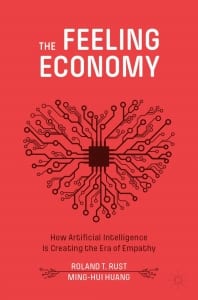Strategies To Grow Your Website Traffic

So how can you attract more customers to your website? There are many different strategies to consider.
Advertise
This may seem obvious, but advertising is key. Consider your target market and advertise in ways that will reach them. You could consider paid ads, social media, magazine or newspaper adverts, TV, radio or display boards as excellent ways to attract people, building your brand’s awareness, and getting your site out there in front of people.
With any advert, consider the wording and language used and the outcome you want for more people to see your site. For example, if you are looking to convert a visit to a sale, you could include a ‘call to action’ within your advert.
Make Sure Your Content Is Valuable
What is it that you offer, that makes you, your site, brand and product stand out? Think about what your customers (now and future) will gain by visiting your site. You might be able to help them solve a problem, sell a product that will help them overcome a hurdle, teach or educate.
If you’re unsure of where to start, have a look at keyword research tools and google trends to see what is popular.
Social Media
It is never enough to have a great product or service in the hope that everyone will just stumble across your site. You need to proactively promote your brand, product, and service. There are many different channels of social media and the luxury of this and you can utilize them in different ways to get the word out.
For example, Twitter is great for immediate short-term influence, whilst Pinterest can offer a longer-term visual solution for continual advertising and Instagram can allow a more interactive way for customers to engage and ‘tag’ you and your business.
SEO
SEO (search engine optimization) is most likely a strategy you’ll of heard of already. In short, it refers to boosting where a website ranks in search results. The higher you rank, the more your website will be seen.
An SEO company can assist with this and work with you to build a plan of action for your business to list higher when customers search for certain words or phrases.
Create Catchy Headlines
Like your products and services, you need to stand out from your competitors. Your services and products could be the best, but unless you have a compelling heading or caption to draw customers in, they could scroll on by.
Consider your customer, use their language and phrasing to engage them. You may want to write out more than one heading out to consider which is most appealing and eye-catching before pressing the publish button.
Offer Variety Of Content
Not only will variety in social media channels boost your exposure but it is also worth considering once you’ve got your customers to your site, how to maximize their visit. Think about your content and your clients. In today’s world, a lot more customers buy and appoint services through their mobile devices whilst out on the move. With this in mind, it is important to ensure you have a mixture of content to cover all bases. Include short and snappy articles, blog posts, videos, photos as well as longer content articles.
Link Internally
Using internal links on your site. That way you can guide customers to other services or products they may be interested in, which they were unaware of, or link to reviews and feedback confirming how wonderful your product or services is.
Have Evergreen Content
There possibly will be times when you focus on an upcoming holiday or occasion as a driving force to get traffic to your website however it is vital that you can maintain a steady stream of traffic for the rest of the year.
It is recommended to use ‘evergreen’ content available that will always be relevant and will continue to attract that footfall.
Examples of evergreen content would be how-to guides, product reviews and answers to frequently asked questions.
Include List Posts
Articles with numbers in the title such as ‘10 ….’ act as a good way to draw attention. By having a number in amongst words it makes it stand out and eye-catching, which will draw in more click-throughs to your website.
These aren’t always the best types of content to build regular viewers/customers – so this is where those internal links to other articles can help – but they offer a great alternative way to drive the traffic to your cyber front door.
Have A Plan In Place
Like all things business we have to work hard to get the results. Driving traffic to your website is no different. It takes hard work and dedication, along with the ability to multitask planing your content, advertising, social media presence along as with the day to day tasks needed within your business or brand. So, it is always a good idea to generate a plan. Plan out your what you are going to post on social media and site or sites you will be using. Plan any new content you’ll be releasing and how you plan to advertise it.
You can get specialize content calenders to help you with this so you’re releasing all your content in a logical order.
Repurpose Your Content
You might be debating how much more work you’ll be taking it but it will pay out in the end and like anything new you’ll find you get quicker at this the more it is implemented. One way to help keep times down is to revamp and repurpose older content in different formats. You might have some amazing older content in your locker, so dig it out and reuse this content in a YouTube video, for example, a Video Pin on Pinterest.
By doing this you are maximizing the amount of value you are getting out of one piece of content.
Email Marketing
With the majority of the population having email, email marketing is a great way to drive traffic and to keep you and brand in your customers’ minds. All you need to do to benefit from this to get customers to sign up. There are many ways to do this, some sites use pop up boxes for this, others have a ‘subscribe here’ open on their side bar. All you have to do, is come up with a compelling reason that they need to sign up and subscribe now.
Once subscribed you’ll be able to communicate directly with your customers. For new subscribers, you can send a welcome email series out to them. This will allow you to make a good impression and allow your customers a ‘get to know you and what your brand or business is all about’. So remember, this is your opportunity to make a good impression. Keep them notified of all new services, product and valuable content you’ve created.
Within the body of these emails you can also include your social media links and start the process of building yourself ‘super fans’ that follow you across of media channels.
With all of these suggestions, it is worth completing research in advance as there are numerous sites and technologies available to assist and make these steps easier to achieve. If that fails there are also companies out there that strategies and support in different fields that you could outsource too.


 Joe Peters is a Baltimore-based freelance writer and an ultimate techie. When he is not working his magic as a marketing consultant, this incurable tech junkie devours the news on the latest gadgets and binge-watches his favorite TV shows. Follow him on
Joe Peters is a Baltimore-based freelance writer and an ultimate techie. When he is not working his magic as a marketing consultant, this incurable tech junkie devours the news on the latest gadgets and binge-watches his favorite TV shows. Follow him on 



